1:30min
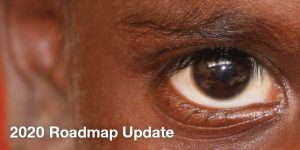
By Helen Carter
Journalist
Australia continues to Close the Gap for Vision for Aboriginal and Torres Strait Islander Australians but it is not occurring fast enough, and we have missed the 2020 target with COVID-19 creating new challenges, a new report says.
The 2020 Annual Update on the Implementation of the Roadmap to Close the Gap for Vision reveals that although more than half (57 per cent or 24 of 42) of the recommendations have been fully implemented, and 84 per cent of activities (116 of 138 intermediary steps) are completed, Australia has missed the 2020 target.
However, coordination of regional eye services now occurs in 59 (92 per cent) of 64 regions nationwide, covering more than 95 per cent of the Indigenous population.
The update, to be launched online at 2.30pm today, states: ‘COVID-19 has impacted 2020 activities but by working together we will close the gap and end avoidable blindness and vision loss.’
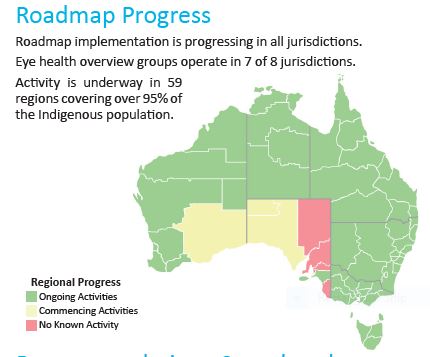
Source: The 2020 Annual Update on the Implementation of the Roadmap to Close the Gap for Vision
The update also reveals:
- Eye examination rates continue to grow, rising in all age groups and reaching one-third of those aged 65 and over, but are still lower than in non-Indigenous people and still do not meet population need. Further growth is required in community controlled and other services
- Trachoma rates in children aged nine and under in outback areas have dropped from more than 20 per cent to less than five per cent, but hotspots have increased from 19 in 2018 to 24 in 2019 (after originally being 54) and community wide antibiotic treatment has stopped in most regions
- Rates of 715 Annual Health Checks, which include an eye check component and a trachoma check in designated areas, continue to grow, but rates are still not at population needs levels. The Northern Territory and Queensland are faring the best, with one-third of their Indigenous populations accessing the assessments
- Cataract surgery rates for Aboriginal and Torres Strait Islander Australians vary nationwide, with urban regions recording consistently lower rates of population-based needs met compared with regional and remote areas. Most of Australia meets under 60 per cent of the need
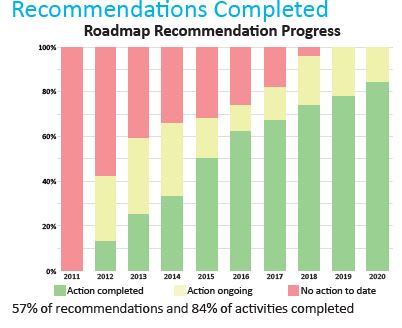
Source: The 2020 Annual Update on the Implementation of the Roadmap to Close the Gap for Vision
The Roadmap, launched in 2012, is an initiative of Indigenous Eye Health, in the University of Melbourne and is led by Melbourne Laureate Professor and ophthalmologist Hugh Taylor AC.
Professor Taylor said 2020 had presented additional challenges with COVID-19 leading to reduced access to eye screening, examination and surgery, resulting in greater backlogs and patient waitlists.
‘The Aboriginal and Torres Strait Islander community led approach to COVID-19 has helped keep communities safe this year,’ he said. ‘This community controlled and led model must be continued and reinforced when it comes to housing if we are to eliminate trachoma.’
COVID-19 has also resulted in an improvement in the provision of soap, washing facilities and additional cleaning in schools and communities which are important in controlling infection and maintaining eye health, particularly reducing trachoma.
‘Australia is the only developed country with trachoma, and housing and environmental health are key to eliminating it,’ Professor Taylor said. ‘Access to soap and washing facilities at home and in school is key, along with ongoing commitment to maintenance and repair of these facilities from the government.
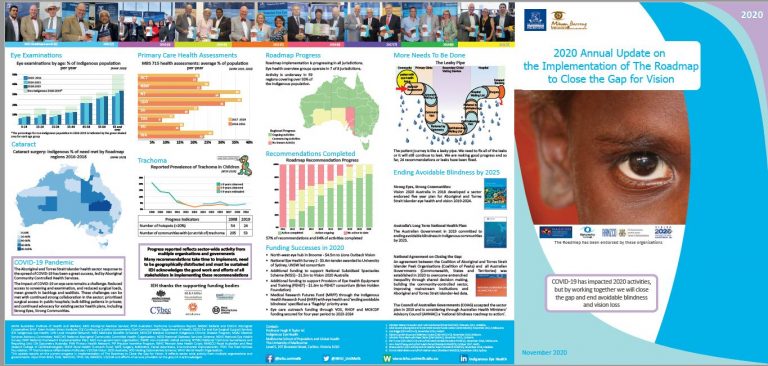
The 2020 Annual Update on the Implementation of the Roadmap to Close the Gap for Vision
Deputy Director of Indigenous Eye Health at the University of Melbourne, optometrist Mitchell Anjou AM told Optometry Australia: ‘It is pleasing to note some progress in improving Aboriginal and Torres Strait Islander eye health services and outcomes through 2020, even given the circumstance and impact that COVID has created.’
Critical sector leadership
Mr Anjou also chairs Optometry Australia’s Aboriginal and Torres Strait Islander eye health Advisory Group.
‘For me, the steps in NSW and SA to improve their subsidised spectacles schemes and Aboriginal and Torres Strait Islander access to these schemes are important advances. ‘The sector leadership from Optometry Australia working with NACCHO and Vision 2020 Australia has been critical.
‘I have been impressed that regional eye care stakeholder groups across the country, and including many local and visiting optometrists, have maintained their connection with patients and communities in times of lockdown by using video technology.
‘We support Optometry Australia’s endeavours to establish appropriate MBS telehealth items for optometry,’ Mr Anjou said.
The Australian Government has provided a funding commitment to the Visiting Optometrists Scheme (and the Rural Health Outreach Fund for ophthalmology services) for the four-year period to 2023-2024.
‘This funding security provides a great opportunity to build and consolidate eye care services.’
Mr Anjou encouraged all optometry service providers to continue to work actively with their jurisdictional fundholders to maximise benefit to community through delivery of services, request support to meet population needs and also training for new practitioners and students.’
Optometry Australia has led the sector input to the Commonwealth on these important outreach service arrangements.
‘Unfortunately, the 2020 Close the Gap for Vision national conference in Adelaide in March was postponed because of the COVID pandemic,’ Mr Anjou said. ‘We hope that as we emerge from 2020 that eye care can get back on track, backlogs of services can be delivered and that we can make 2021 a year of great eye care.’
The National Aboriginal and Torres Strait Islander Eye Health Conference is scheduled for April 2021.
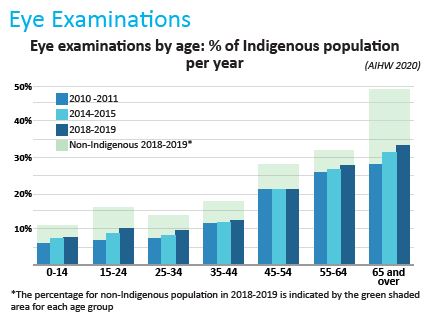
Source: The 2020 Annual Update on the Implementation of the Roadmap to Close the Gap for Vision
The Roadmap update report found the Aboriginal Community Controlled Health sector continues to increase the proportion of community members accessing health assessments each year.
‘This is critical to identifying those needing eye examinations through strengthened eye health capacity in primary care,’ Professor Taylor said.
‘The inclusion of an eye check in these exams then requires safe pathways, and ready access, to specialist eye care at no-cost to patients. Models of care, workforce support, training and investment in capacity building are also key.’
Professor Taylor said he welcomed the Australian Government’s commitment to ending avoidable blindness in Indigenous communities by 2025 through Australia’s Long Term National Health Plan.
‘We hope to see further commitment to support activities that will help contribute towards the goals of Close the Gap for Vision and ending avoidable blindness by 2025, including those activities detailed in the sector’s strategic plan, Strong Eyes, Strong Communities (2019-2024),’ Professor Taylor said.
The update will be launched by Deputy Vice-Chancellor (Student and University Experience) at Australian National University, Professor Ian Anderson, with Professor Taylor. Professor Anderson is a Palawa man from the northwest coast of Tasmania with traditional ties to country known as Tebrakunna.
The Roadmap has been endorsed by NACCHO, Optometry Australia, RANZCO and Vision 2020 Australia.
Read also: Big jump in Indigenous Australians accessing eye health services, report shows
Tagged as: Indigenous eye health, Remote & rural optometry